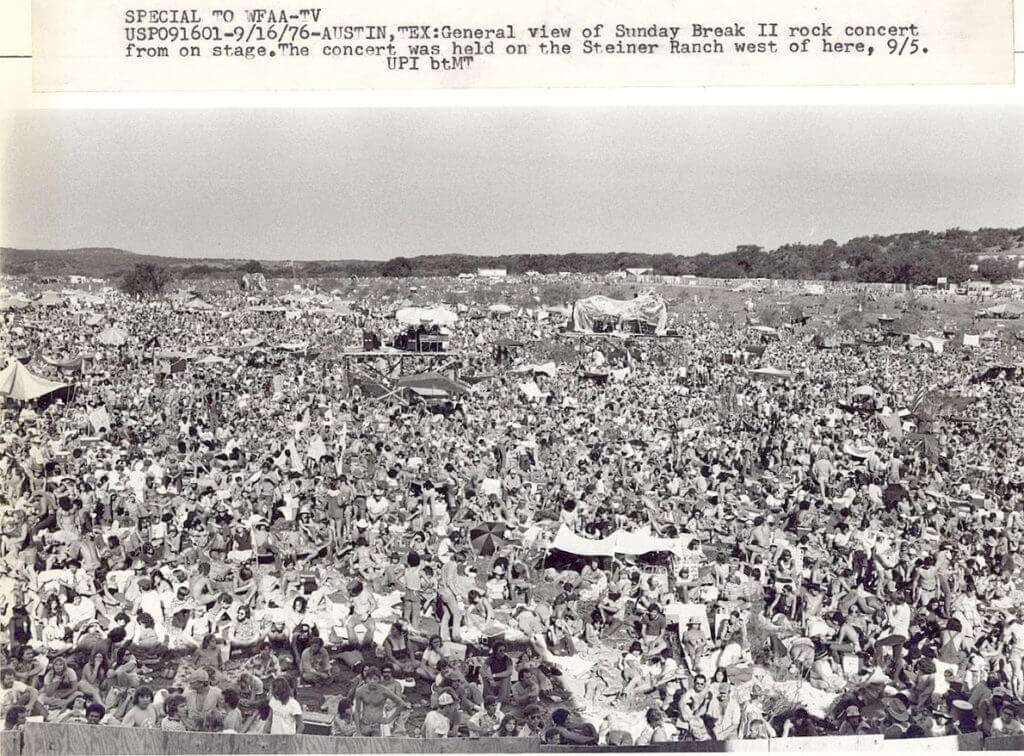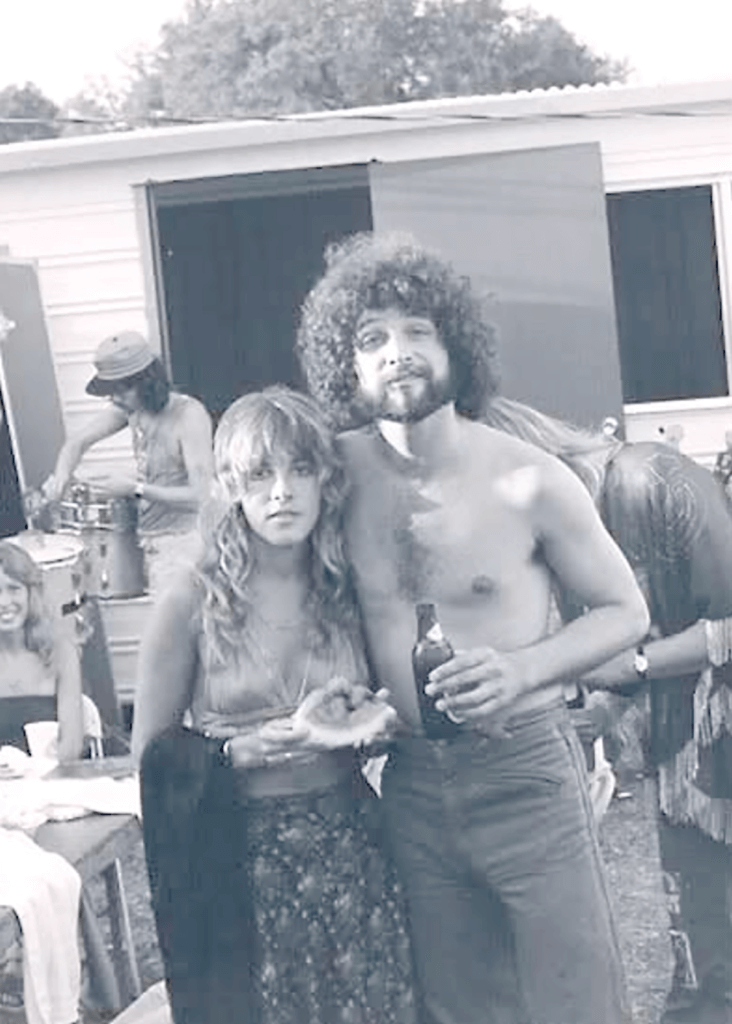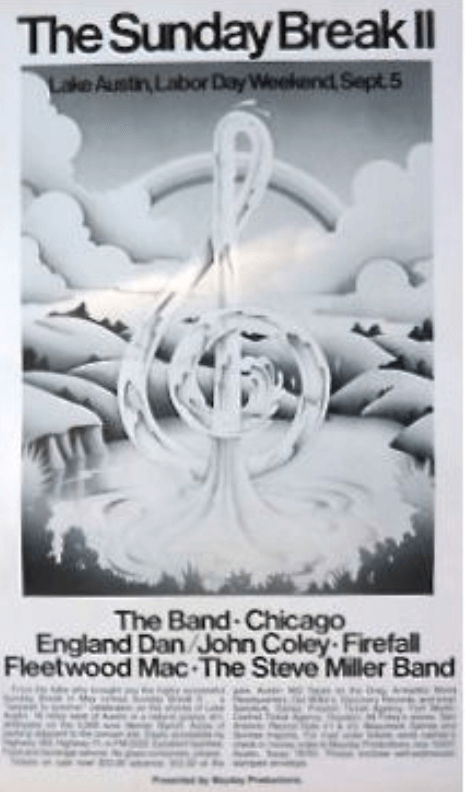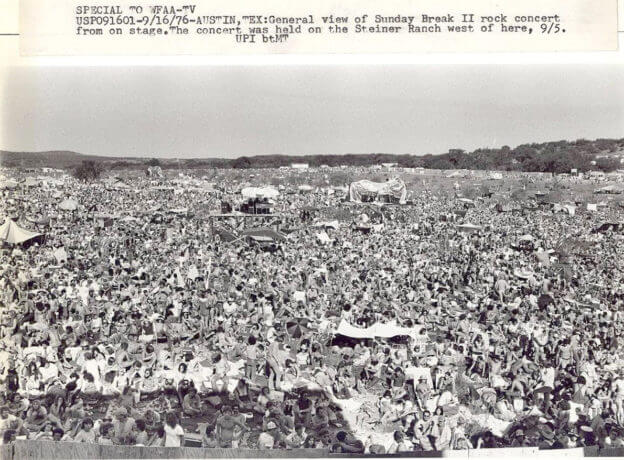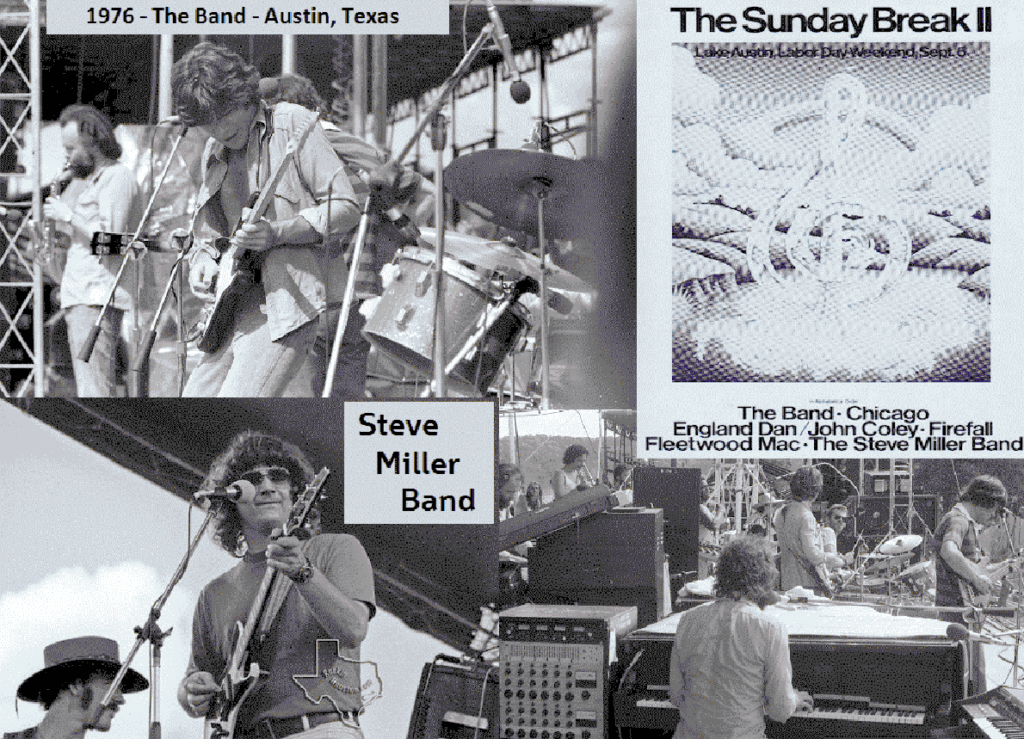
By SARAH DOOLITTLE, Four Points News
Steiner Ranch was home to the music festival Sunday Break II on September 5, 1976, and featured such acts as The Band, Chicago, Fleetwood Mac, Peter Frampton and the Steve Miller Band.
This event 43 years ago helped shape Austin’s music scene into what it is today — the “Live Music Capital of the World”.
It was the second musical festival to be hosted in Austin in a four-month period. On May 2, 1976, music promoter Mayday Productions held their first ever concert, Sunday Break I, which was at the time the largest music festival Austin had ever seen. It was located on a site near Interstate 35 and U.S. Highway 290. The event was a huge success for the organizers, according to reports, netting them over $120,000.
Sunday Break II, however, was a different story.
Based on the success of the May 2 concert, which attracted crowds estimated at 56,000 fans, Mayday expected 100,000 to attend the Steiner event, which included some of the same acts as the first along with several new ones.
Unfortunately, RM 620 was a two-lane road at the time and not built to accommodate the large crowds converging on Steiner Ranch. And the concert itself was over three miles south of 620, at the site where The Grove subdivision is now located.
Tom and Carole Greene have lived on Lake Austin adjacent to Steiner Ranch since 1957. They recall that the concert caused traffic on 620 to be backed up all the way to Bee Cave to the south and to 183 to the north in the days before the Sunday concert.
Tom and Carole tried to leave Steiner Ranch via Quinlan Park Road (still unpaved at the time and with five cattle guards) on the Friday night beforehand but, as Carole said, “We couldn’t get any farther than (Quinlan). We just turned around,” and went back home.
Compared to the quiet, rural life the Greenes had always enjoyed, with 5,000 acres of open ranchland in their backyard, the concert was like entering another world. There were, “people all over,” said Carole. “Hash for sale, Drugs here, big signs and everything,” as well as, “naked people all up and down the road.”
Photos from the concert as well as color films (available on YouTube) show vast crowds of primarily young people camping, swimming and enjoying the music. In addition to these activities, concert goers can be seen smoking weed and consuming vast amounts of beer in aluminum pull-tab cans. Everyone seems to have agreed in advance on a wardrobe of denim jeans with t-shirts for men and bikini tops for women.
The University of Texas Austin Cactus Yearbook dedicated two pages in their Class of 1977 edition to the event, noting that, “Cars inched toward the ranch with constant nudging by state troopers. Parking lot overflow stretched down the road for 1.5 miles, and the drivers lined the street on foot, armed with ice chests and blankets as they migrated toward the music in 95 degree-plus heat.”
Due to the traffic, music acts had to be delivered to the site via boat, according to the Greenes. Over 2,000 attendees were treated for heat stroke, reports state.
Of greater urgency to the Greenes, though, was the emergency in their own backyard. “One of our best friends (Henry) had a heart attack. Couldn’t get him out,” said Tom. Luckily some other neighbors were volunteer firefighters and worked on Henry until they were able to get him to a hospital.
Whether due to traffic, the isolated locale or the heat, the promoters, who expected to sell 100,000 tickets, ended up selling only 28,485 tickets officially, according to the November 1976 issue of Texas Monthly magazine.
Mayday tried to claim that 100,000 people had attended, with the majority using counterfeit tickets, but aerial photos studied by experts at the time estimated the crowd at just 25,000. Furthermore, because the organizers had not collected ticket stubs, they had no proof to back up their counterfeiting claims. Instead, tickets were collected from trash cans around the venue and only 2.2 percent of over 9,000 collected were found to be fakes.
As a result of poor attendance, Mayday’s second ever music festival was their last. With losses in the hundreds of thousands of dollars, Mayday had to declare bankruptcy.
Still, the event was a success from a musical standpoint. As Texas Monthly put it, “The irony of the whole thing is that the show was excellent. The bands performed on schedule and played well. Sound and visibility were better than Sunday Break I.” The magazine could only concluded that it was inaccessibility that killed Sunday Break II.
The concert left its mark on Steiner Ranch for years to come. Tom Greene said that, “For years after… you couldn’t go 200 feet without finding a little fire pit.” Furthermore, the ranch was dotted with abandoned cars and, said Tom, “There were hippies who came a month ahead of time and camped out on the ranch, and they were still here six months later.”
Most who now live in the area are unfamiliar with this part of Steiner Ranch’s history. Still, the concert was memorable, not only for its music but for its surprises. A plane flew overhead and dropped thousands of coupons for a local business on the crowd. Two babies were born. It was the first known concert to have had it’s protective gate around the stage knocked down from behind, as there were more people backstage than in front of it.
It’s likely not an event that could be replicated today, or welcomed for that matter, as modern residents of Four Points still struggle with the limits of RM 620. There is one aspect of the concert, however, that might inspire a little envy from today’s lovers of classic rock: tickets for the event were just $10 in advance and $12.50 at the gate. For that price, some might consider it worth risking a little traffic and heat stroke.
